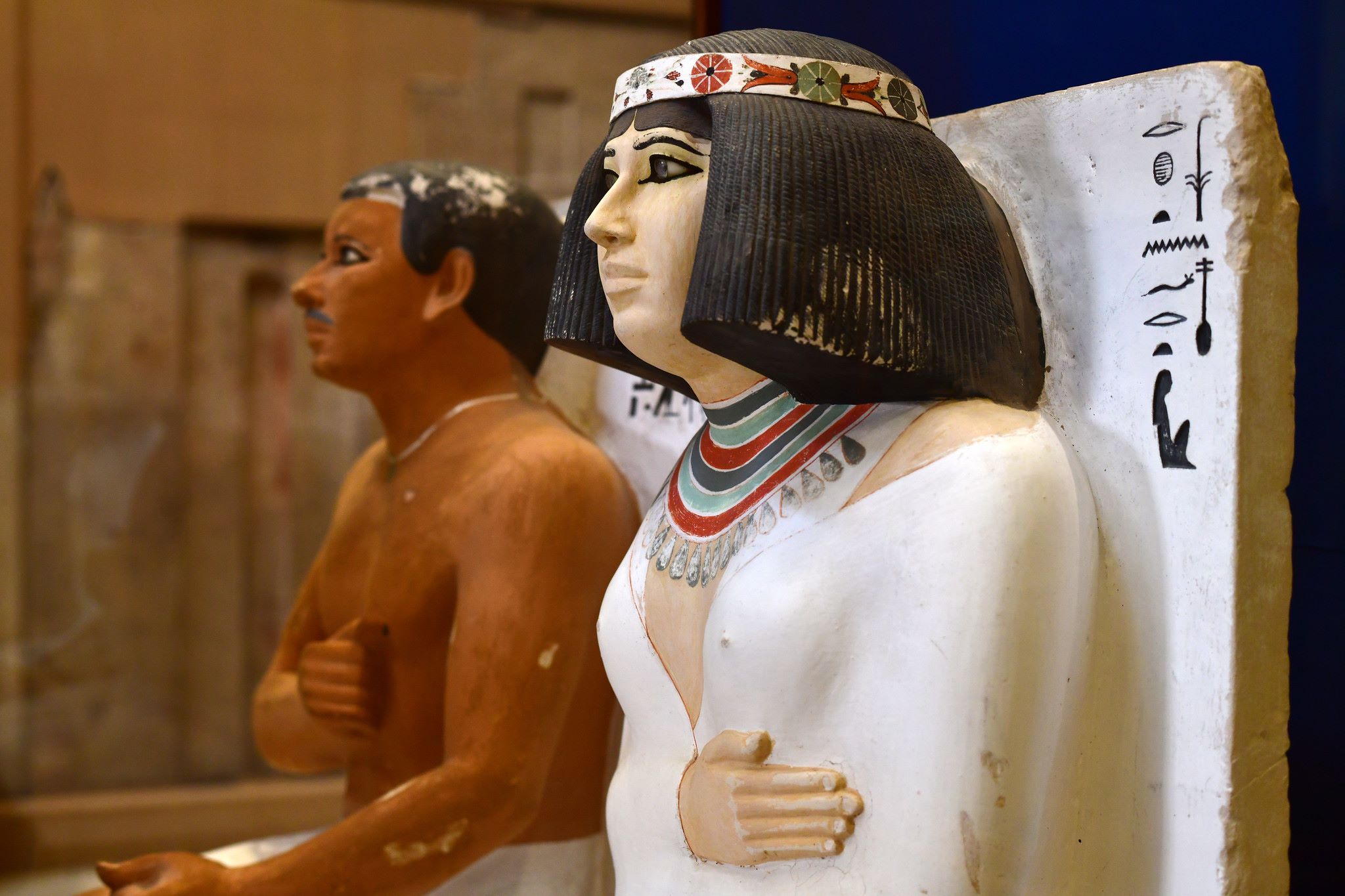
Egyptian statues have fascinated people for centuries. These ancient sculptures, often depicting gods, pharaohs, and mythical creatures, hold many secrets about the past. But what makes them so special? Egyptian statues were not just art; they were believed to house the spirits of the depicted beings. Crafted from materials like stone, wood, and metal, these statues were placed in tombs and temples to ensure eternal life and protection. Their intricate designs and symbolic meanings offer a glimpse into the beliefs and daily life of ancient Egypt. Ready to learn more? Here are 35 intriguing facts about Egyptian statues that will transport you back in time.
Key Takeaways:
- Egyptian statues were more than just art - they were religious symbols, protective guardians, and even homes for spirits. Their craftsmanship and cultural impact continue to inspire and captivate people around the world.
- From colossal monuments to tiny amulets, Egyptian statues come in all shapes and sizes. They have left an enduring legacy, influencing art, culture, and even modern-day interpretations.
Ancient Egyptian Statues: A Glimpse into History
Egyptian statues have fascinated people for centuries. These ancient artifacts offer a window into the culture, beliefs, and daily life of one of history's most intriguing civilizations. Here are some captivating facts about these timeless creations.
-
Symbolism: Egyptian statues often represented gods, pharaohs, and important figures. They were not just art but held deep religious significance.
-
Materials Used: Artists used various materials like limestone, granite, and wood. Each material had its own symbolic meaning and purpose.
-
Size Matters: Statues ranged from small figurines to colossal monuments. The size often indicated the importance of the person or deity depicted.
-
Realism and Idealism: While some statues aimed for realism, many depicted idealized versions of their subjects, emphasizing divine or royal qualities.
-
Colorful Creations: Originally, many statues were painted in vibrant colors. The paint has often faded over time, but traces can still be seen.
Techniques and Craftsmanship
Creating these statues required incredible skill and precision. The techniques used by ancient Egyptian artisans were advanced for their time.
-
Carving Techniques: Artisans used copper tools, stone hammers, and chisels to carve intricate details into hard stone.
-
Polishing: After carving, statues were polished to a smooth finish using sand and other abrasives.
-
Inlay Work: Some statues featured inlaid eyes made of precious stones or glass, adding a lifelike quality.
-
Symmetry: Egyptian artists valued symmetry and proportion, often using grids to ensure accuracy.
-
Hieroglyphics: Many statues included inscriptions in hieroglyphics, providing information about the subject or dedicatory messages.
Religious and Cultural Significance
Statues played a crucial role in Egyptian religion and culture. They were more than just decorative objects.
-
Ka Statues: These statues were believed to house the 'ka' or spirit of the deceased, ensuring their presence in the afterlife.
-
Temple Statues: Placed in temples, these statues represented gods and were worshipped by priests and devotees.
-
Funerary Statues: Often found in tombs, these statues depicted the deceased and were intended to serve them in the afterlife.
-
Protective Statues: Some statues were believed to have protective powers, guarding against evil spirits.
-
Public Monuments: Large statues of pharaohs and gods were erected in public spaces to demonstrate power and divine favor.
Famous Egyptian Statues
Some statues have become iconic symbols of ancient Egypt. These masterpieces continue to captivate people around the world.
-
The Great Sphinx: This colossal statue with the body of a lion and the head of a pharaoh stands guard near the pyramids of Giza.
-
Statue of Ramses II: Known for its grandeur, this statue of one of Egypt's greatest pharaohs stands in the temple of Abu Simbel.
-
Nefertiti Bust: This beautifully crafted bust of Queen Nefertiti is renowned for its exquisite detail and elegance.
-
Tutankhamun's Guardian Statues: Found in the young pharaoh's tomb, these statues depict him as a protector of his own burial chamber.
-
Colossi of Memnon: These two massive statues of Pharaoh Amenhotep III have stood for millennia, enduring the test of time.
Mysteries and Discoveries
Despite extensive study, many aspects of Egyptian statues remain shrouded in mystery. New discoveries continue to shed light on these ancient artifacts.
-
Hidden Chambers: Some statues have been found to contain hidden chambers or compartments, possibly for storing sacred objects.
-
Unfinished Statues: Numerous unfinished statues have been discovered, providing insight into the artistic process.
-
Lost Statues: Many statues mentioned in ancient texts have yet to be found, sparking ongoing archaeological quests.
-
Restoration Efforts: Modern technology has enabled the restoration of damaged statues, revealing their original splendor.
-
Forgery and Replicas: The popularity of Egyptian statues has led to the creation of forgeries and replicas, some of which are incredibly convincing.
The Legacy of Egyptian Statues
The influence of Egyptian statues extends far beyond their time. They have left an indelible mark on art, culture, and history.
-
Influence on Art: Egyptian statues have inspired countless artists throughout history, from ancient Greece to the Renaissance.
-
Cultural Impact: These statues have become symbols of ancient Egyptian culture, appearing in literature, film, and popular media.
-
Tourist Attractions: Iconic statues like the Sphinx and the Colossi of Memnon draw millions of tourists to Egypt each year.
-
Museum Exhibits: Many of the world's leading museums feature Egyptian statues in their collections, attracting visitors from around the globe.
-
Educational Value: Studying these statues provides valuable insights into ancient Egyptian society, religion, and art.
Fun and Lesser-Known Facts
Beyond their historical and cultural significance, Egyptian statues have some fun and lesser-known aspects that add to their intrigue.
-
Animal Statues: Not all statues depicted humans; many represented animals, both real and mythical, such as cats, falcons, and sphinxes.
-
Miniature Statues: Some statues were incredibly small, designed to be carried as amulets or placed in tombs as offerings.
-
Statue Gardens: Wealthy Egyptians sometimes had gardens filled with statues, creating serene and beautiful spaces.
-
Statue Repair: Ancient Egyptians repaired damaged statues, showing their value and importance in society.
-
Modern Interpretations: Contemporary artists continue to create works inspired by Egyptian statues, blending ancient techniques with modern styles.
The Timeless Allure of Egyptian Statues
Egyptian statues hold a unique fascination. These ancient works of art offer a glimpse into a civilization that valued both the divine and the mortal. Each statue, whether of a pharaoh, a god, or an everyday person, tells a story. The craftsmanship and attention to detail are astounding, reflecting the skills and beliefs of the time.
From the grandeur of the Great Sphinx to the intricate carvings of smaller statues, these artifacts have stood the test of time. They continue to captivate historians, archaeologists, and art lovers alike. The materials used, the symbolism behind each pose, and the inscriptions all add layers of meaning.
Understanding these statues helps us appreciate the rich cultural heritage of ancient Egypt. They are not just relics of the past but are windows into a world that continues to inspire and intrigue.
Frequently Asked Questions
Was this page helpful?
Our commitment to delivering trustworthy and engaging content is at the heart of what we do. Each fact on our site is contributed by real users like you, bringing a wealth of diverse insights and information. To ensure the highest standards of accuracy and reliability, our dedicated editors meticulously review each submission. This process guarantees that the facts we share are not only fascinating but also credible. Trust in our commitment to quality and authenticity as you explore and learn with us.


